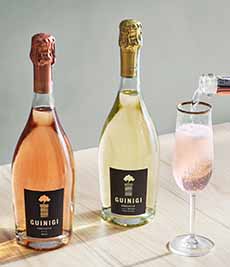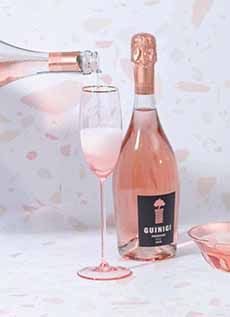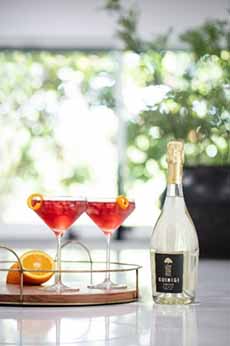Rose Prosecco History, Food Pairings & Cocktails For National Prosecco Day
|
|
Prosecco is an ideal sparkling wine for summer: light, aromatic, crisp, and affordable. National Prosecco Day, August 13th, is a day to head to the store and buy a bottle or two. In addition to serving as a delightful aperitif or mixed into cocktails (recipes below). Fans love Prosecco for its fizzy bubbles, fruit nuances, light body, and affordable price points. Many of us love it year-round—on its own and as the base for a Bellini or Mimosa and instead of the much more expensive Champagne in a Champagne Cocktail or a French 75. The United States remains the leading Prosecco export market, and Prosecco rosé was expected to account for 10% of the half-million bottles of Prosecco produced in 2021 according to the New York Times—an impressive feat considering the Italian wine authorities only deemed it an official wine category in 2020. > The history of Prosecco. Prosecco is sweeter than Champagne, and pairs well with most foods as long as they’re not heavy, such as grilled meats, roasts, and stews. It can be enjoyed throughout the meal. Consider: > The history of Prosecco rose is below. We tasted our first bottle of rosé Prosecco last year on this very holiday. That’s because, in the world of Prosecco, the rosé version appeared for the first time just last year (more about that below). Rosé wines are called pink wines in the U.K. and elsewhere, rosato in Italian, and rosé, is the French term. What exactly is Prosecco rosé? It’s a new combination of two classics, Prosecco and rosé. Otherwise stated, it’s the rosé version of white Prosecco, just as rosé Champagne is the rosé version of classic Champagne. Prosecco rosé was born, officially, in May 2020, when the Prosecco Denomination of Controlled Origin (DOC) Consortium, which manages all Prosecco production, updated its rules for production, authorizing the new style of wine. The Italian Ministry of Agricultural, Food, and Forestry Policies’ National Wine Committee also approved new guidelines for the blend. Prosecco rosé became official as of January 1, 2021. Previously, the red Pinot Noir grape was allowed in the production of white Prosecco, but only the flesh (which is white) and not the skin (which is red and used during the phase called skin contact to make all rosé and red wines). To be considered Prosecco rosé: Prosecco rosé has the same style as the white Prosecco i.e., light and fruity. Since there is skin contact with the Pinot Noir grapes, the rosé version has not only a delicate pink color, but some of the delicate fruit flavors of Pinot Noir. As a comparison: Here’s a tip: Stock up on the rosé Prosecco for Valentine’s Day. Prosecco can be substituted for Champagne or any other sparkling wine in cocktails. Here are two created by the mixologists at Guinigi Prosecco, a leading producer. You can make these with either the white or rosé Prosecco. Both the name “Guinigi” and the label art are inspired by La Torre Guinigi, a historical landmark in the town of Lucca, Tuscany, where ancestors of the Sebastiani family resided. Built in the Middle Ages, the Romanesque fortification overlooks the city. 1. POUR the elderflower liqueur into the bottom of a flute. Fill with prosecco. Give it the lightest stir with a swizzle stick. 2. garnish with a lemon twist and rosemary spring and serve. Ingredients Per Drink 1. FILL a coupe glass with ice, and add the vermouth. 2. FILL with Prosecco and garnish with an orange twist or slice. |
|
|
________________ *Italy’s denominazione di origine controllata (DOC, designation of origin) system, introduced in 1963, is based on the French model, but goes one step further: It specifies not only the production area and methods for each wine, but also guarantees the quality standard of certain wines which pass a government taste test. Denominazione di Origine Controllata (DOC), and the higher-level Denominazione di Origine Controllata e Garantita (DOCG), together are called Denominazione d’Origine Protetta (DOP, protected origin). These label classifications help consumers understand the quality of the wine they are buying and where it came from. Some classifications can be found on the label of the bottle. All DOCG wines and some DOC wines will have a paper band containing a serial number that covers the cork or wraps around the neck of the wine bottle. Here’s more about Italian wine classifications. †The French word millesime (millesimato in Italian) means a great vintage. In Champagne, a vintage year can be declared when the grapes reach a certain level of ripeness. In the Valdobiene, in the production of Prosecco, it simply refers to a particular year. CHECK OUT WHAT’S HAPPENING ON OUR HOME PAGE, THENIBBLE.COM.
|
||









